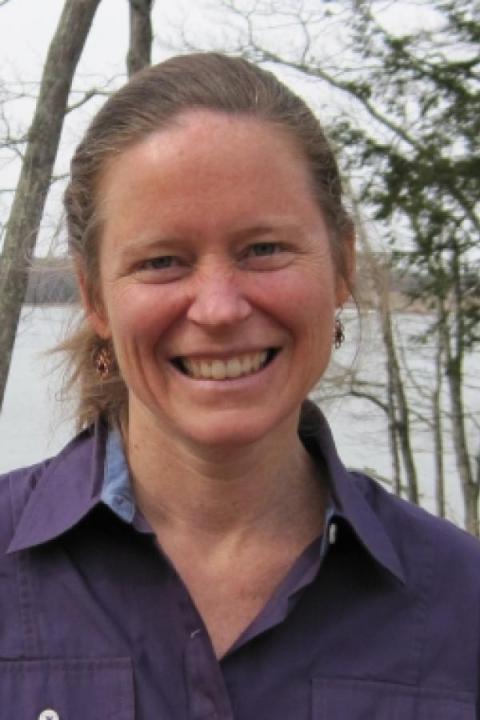
Heidi Asbjornsen
Courses Taught
- NR 600: Work Experience
- NR 729/829: Silviculture
- NR 734: Tropical Ecology
- NR 734/834: Tropical Ecology
- NR 993: Sem/Agroforestry
Education
- Ph.D., Ecosystem Ecology, Yale University
- M.S., Forest Ecology, Yale University
- B.A., Biology, Carleton College
Selected Publications
Brum, M., Lopez, J. G., Asbjornsen, H., Licata, J., Pypker, T., Sanchez, G., & Oliveira, R. S. (2019). ENSO effects on the transpiration of eastern Amazon trees (vol 374, 20180551, 2018). PHILOSOPHICAL TRANSACTIONS OF THE ROYAL SOCIETY B-BIOLOGICAL SCIENCES, 374(1764). Retrieved from https://www.webofscience.com/
Wyka, S. A., McIntire, C. D., Smith, C., Munck, I. A., Rock, B. N., Asbjornsen, H., & Broders, K. D. (2018). Effect of Climatic Variables on Abundance and Dispersal of Lecanosticta acicola Spores and Their Impact on Defoliation on Eastern White Pine. PHYTOPATHOLOGY, 108(3), 374-383. doi:10.1094/PHYTO-02-17-0065-R
Jennings, K. A., Guerrieri, R., Vadeboncoeur, M. A., & Asbjornsen, H. (2016). Response of Quercus velutina growth and water use efficiency to climate variability and nitrogen fertilization in a temperate deciduous forest in the northeastern USA. TREE PHYSIOLOGY, 36(4), 428-443. doi:10.1093/treephys/tpw003
Jr, W. D. W., Alcoforado de Moraes, M. M. G., Asbjornsen, H., Mayer, A. S., Licata, J., Lopez, J. G., . . . Germano, B. D. N. (2015). Bioenergy Development Policy and Practice Must Recognize Potential Hydrologic Impacts: Lessons from the Americas. ENVIRONMENTAL MANAGEMENT, 56(6), 1295-1314. doi:10.1007/s00267-015-0460-x
Gollany, H. T., Titus, B. D., Scott, D. A., Asbjornsen, H., Resh, S. C., Chimner, R. A., . . . Cisz, M. E. (2015). Biogeochemical Research Priorities for Sustainable Biofuel and Bioenergy Feedstock Production in the Americas. ENVIRONMENTAL MANAGEMENT, 56(6), 1330-1355. doi:10.1007/s00267-015-0536-7
Asbjornsen, H., Hernandez-Santana, V., Liebman, M., Bayala, J., Chen, J., Helmers, M., . . . Schulte, L. A. (2014). Targeting perennial vegetation in agricultural landscapes for enhancing ecosystem services. RENEWABLE AGRICULTURE AND FOOD SYSTEMS, 29(2), 101-125. doi:10.1017/S1742170512000385
Gotsch, S. G., Asbjornsen, H., Holwerda, F., Goldsmith, G. R., Weintraub, A. E., & Dawson, T. E. (2014). Foggy days and dry nights determine crown-level water balance in a seasonal tropical montane cloud forest. PLANT CELL AND ENVIRONMENT, 37(1), 261-272. doi:10.1111/pce.12151
Goldsmith, G. R., Munoz-Villers, L. E., Holwerda, F., McDonnell, J. J., Asbjornsen, H., & Dawson, T. E. (2012). Stable isotopes reveal linkages among ecohydrological processes in a seasonally dry tropical montane cloud forest. ECOHYDROLOGY, 5(6), 779-790. doi:10.1002/eco.268
Helmers, M. J., Zhou, X., Asbjornsen, H., Kolka, R., Tomer, M. D., & Cruse, R. M. (2012). Sediment Removal by Prairie Filter Strips in Row-Cropped Ephemeral Watersheds. JOURNAL OF ENVIRONMENTAL QUALITY, 41(5), 1531-1539. doi:10.2134/jeq2011.0473
Asbjornsen, H., Goldsmith, G. R., Alvarado-Barrientos, M. S., Rebel, K., Van Osch, F. P., Rietkerk, M., . . . Dawson, T. E. (2011). Ecohydrological advances and applications in plant-water relations research: a review. JOURNAL OF PLANT ECOLOGY, 4(1-2), 3-22. doi:10.1093/jpe/rtr005